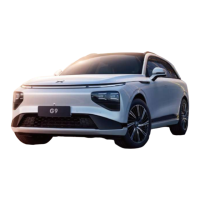• Dark (poor light) or low visibility (due to heavy
rain, heavy snow, heavy fog, and others).
• When the hard light (for example the headlamp
light or the direct sunlight) interferes with the
camera's field of view.
• The windscreen blocks the camera’s field of
view (blocked by water mist, dust, or sticker).
• The camera is subject to the limit. See 20
page
• A certain type of object is mistakenly
displayed as another type of object.
• An object is simulated and displayed in the
wrong direction and distance.
The above example, warning, and limit do not
describe all conditions that affect the normal
operation of the environment simulation display
system.
$GDSWLYH&UXLVH&RQWURO$&&
)XQFWLRQ,QWURGXFWLRQ
The adaptive cruise control function can control
the vehicle to move following the preceding
vehicle at the set distance. If there is no target
vehicle ahead, the function will control the
vehicle to move according to the set cruise
vehicle speed.
7LSV
• The cruise vehicle speed range is set as
30~130 km/h.
• When moving following the preceding
vehicle, the ACC can still be applicable
at low speed. When the preceding vehicle
stops, the current vehicle also stops, and
it can start to move when the preceding
vehicle starts to move.
• The brake light will be turned on to remind
other road users that you are decelerating
when ACC actively decelerates to keep a
distance from the preceding vehicle.
$VVLVWHG'ULYLQJ
40
3
https://www.automotive-manuals.net

